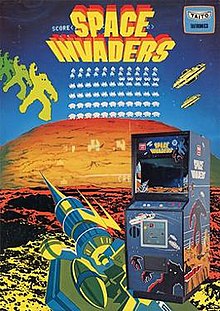Time Line

1958
Tennis for Two - Considered one of the earliest video games, Tennis for Two was created by physicist William Higinbotham and featured a simple tennis simulation displayed on an oscilloscope screen.

1972
Pong - Developed by Atari, Pong became the first commercially successful arcade video game, popularizing the concept of electronic gaming. Pong is a classic arcade video game that was released in 1972 by Atari. It is one of the earliest arcade video games and is considered a pioneer in the video game industry.

1978
Space Invaders - Released by Taito, Space Invaders became a cultural phenomenon and helped establish the popularity of arcade video games.Space Invaders is a classic arcade game that was released in 1978 by Taito. It is one of the earliest shooting games and helped to popularize the genre. In the game, players control a laser cannon at the bottom of the screen and must defend Earth from waves of descending alien invaders.

1985
Super Mario Bros. - Created by Nintendo, Super Mario Bros. revolutionized the platformer genre and became one of the best-selling video games of all time.Super Mario is a beloved video game franchise created by Nintendo, featuring the iconic character Mario, a plumber who embarks on various adventures to rescue Princess Peach from the villainous Bowser.

1991
Sonic the Hedgehog - Sega's iconic mascot, Sonic the Hedgehog, made his debut in this fast-paced platformer, competing with Nintendo's Mario for dominance in the console market.

1993
Doom - Developed by id Software, Doom popularized the first-person shooter genre and introduced multiplayer gaming through LAN connections."Doom" is a legendary first-person shooter video game franchise that revolutionized the gaming industry with its fast-paced action, intense gameplay, and iconic demon-slaying protagonist, the Doom Slayer.

1996
Pokémon Red and Blue - The Pokémon franchise took the world by storm with the release of these games, sparking a global phenomenon that continues to this day.

2004
World of Warcraft - Blizzard Entertainment's massively multiplayer online role-playing game (MMORPG) set new standards for online gaming and social interaction. World of Warcraft, often abbreviated as WoW, is a massively multiplayer online role-playing game (MMORPG) developed and published by Blizzard Entertainment.

2011
Minecraft - Developed by Mojang, Minecraft became a cultural phenomenon with its open-world sandbox gameplay and creative building mechanics.Minecraft is a sandbox video game that was originally created by Markus "Notch" Persson and later developed and published by Mojang Studios.

2020
The Last of Us Part II - Released for the PlayStation 4, The Last of Us Part II received critical acclaim for its storytelling, character development, and gameplay mechanics.